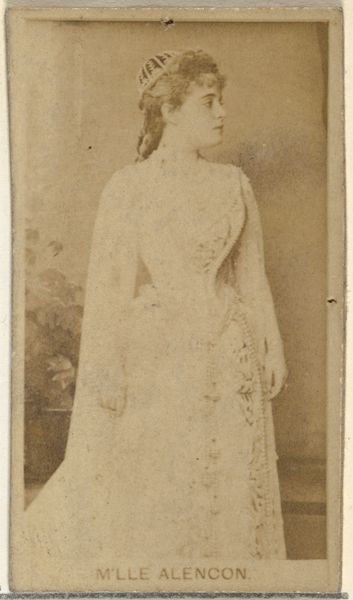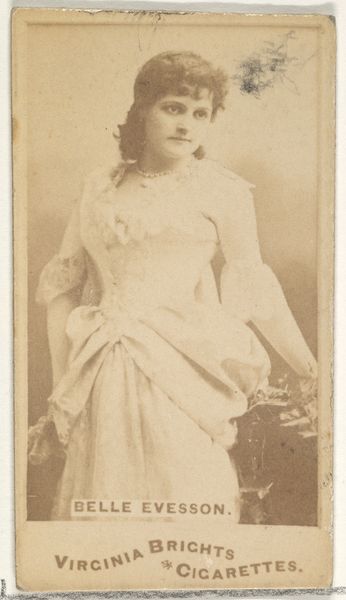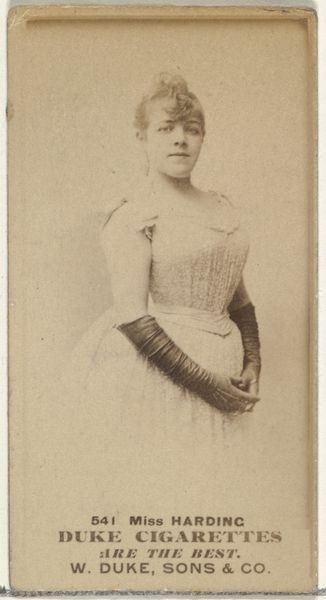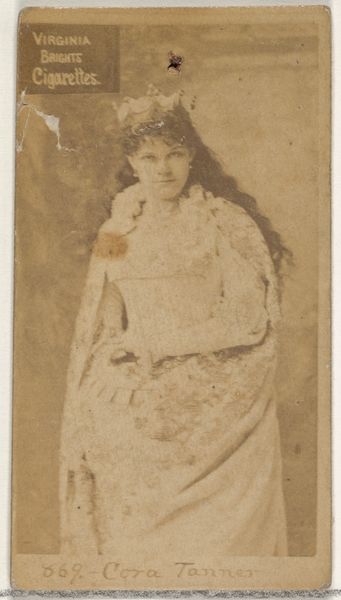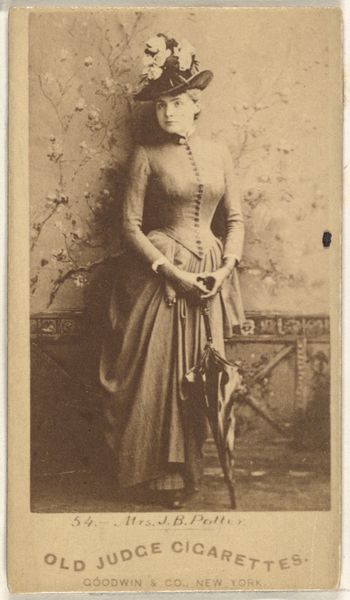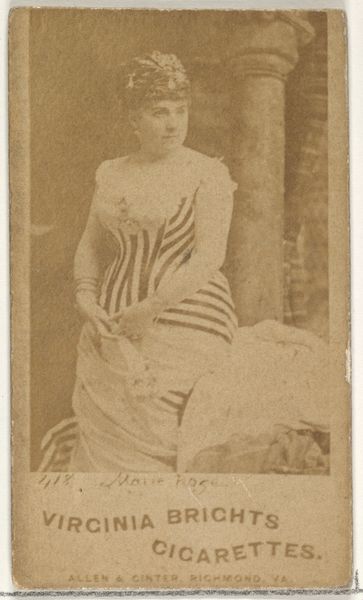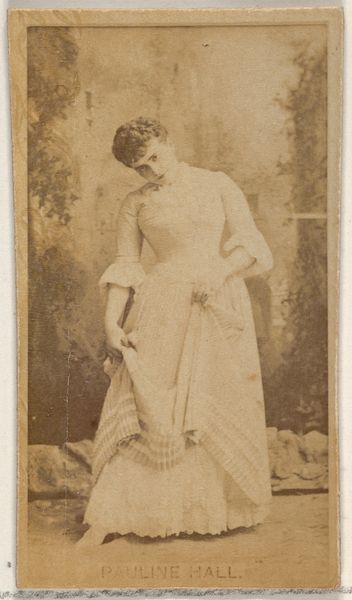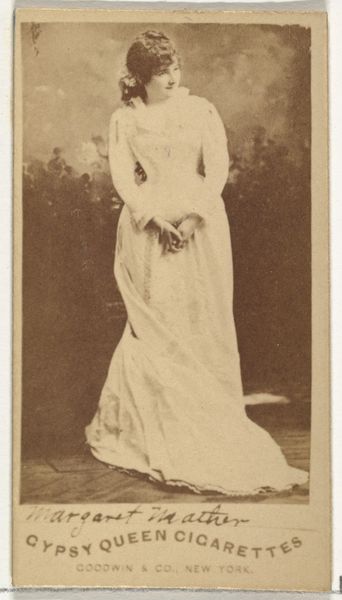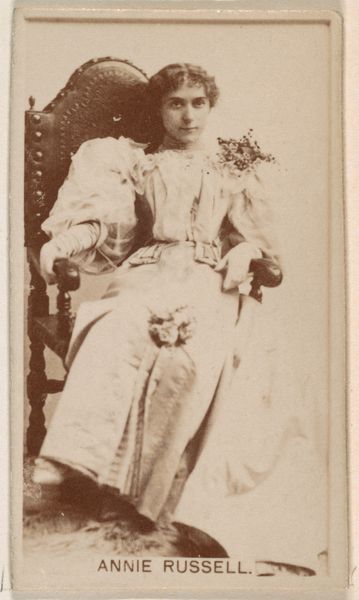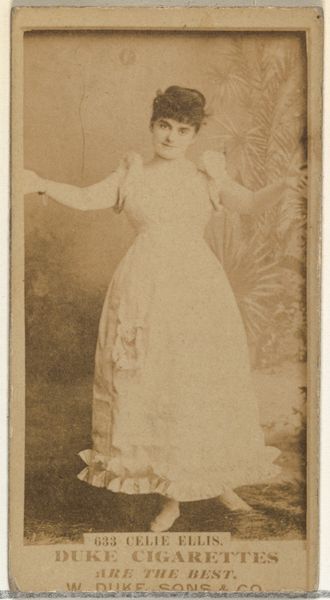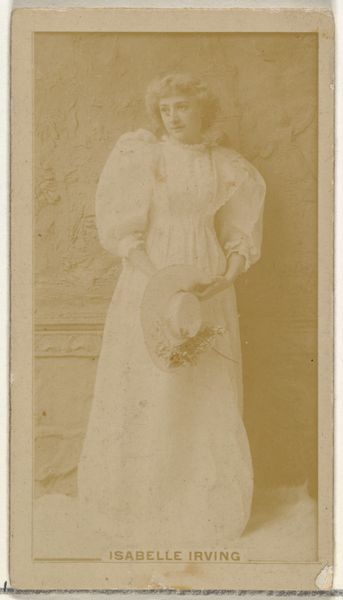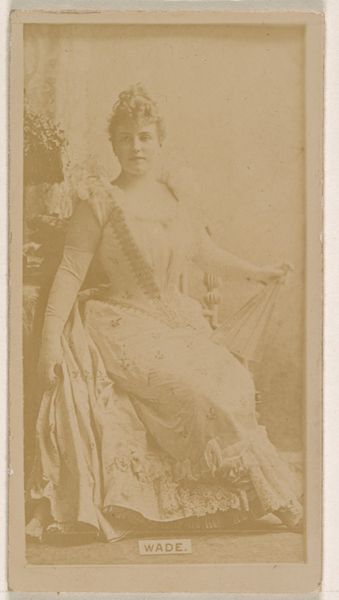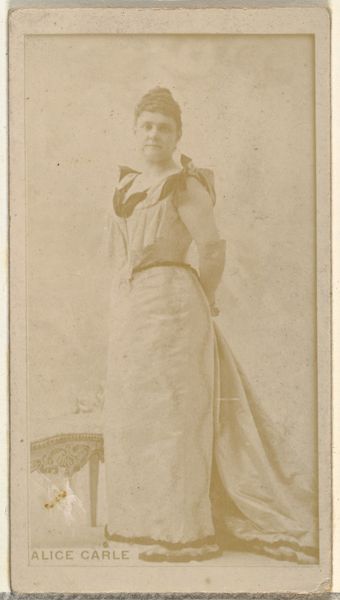
Emily Bancker, from the Actors and Actresses series (N145-8) issued by Duke Sons & Co. to promote Duke Cigarettes 1890 - 1895
0:00
0:00
print, paper, photography
#
portrait
# print
#
paper
#
photography
Dimensions: Sheet: 2 11/16 × 1 3/8 in. (6.8 × 3.5 cm)
Copyright: Public Domain
Curator: Welcome. We are standing before "Emily Bancker, from the Actors and Actresses series," dating circa 1890-1895. These portrait prints were produced by W. Duke, Sons & Co. as promotional items for Duke Cigarettes and became quite collectible at the time. Editor: It has such a melancholic quality. The sepia tone and the way her dress blends into the background, the fleur-de-lis wallpaper, it all creates this wonderfully faded atmosphere. Curator: Indeed, it's essential to consider these cards as part of the burgeoning consumer culture. The material object itself, this small print on paper, speaks to the intersection of entertainment, advertising, and the everyday lives of people acquiring and collecting them. Editor: What I find fascinating is the composition. Bancker’s averted gaze draws you in but then deflects any sense of genuine connection. Her stance feels rather formal, a common feature in portraiture of the period. It's all quite calculated, wouldn't you say? Curator: Calculated, certainly, within the means of production. These cards weren’t intended as high art. They were a low-cost, mass-produced commodity meant to drive sales of cigarettes. Her carefully chosen outfit and poised stance highlight her as a marketable commodity herself, playing into the idealized image of the actress. The choice of photography printed on paper shows this transitional state. Editor: I appreciate your emphasis on its cultural and economic purpose. Still, one cannot dismiss the purely visual effects. The soft gradations of tone and the interplay between the figure and the ground create a compelling image. There's also a deliberate flattening of space, almost echoing the conventions of theatrical set design. Curator: That "flattening" served to make reproduction cheaper. Every aspect, down to the paper quality, determined its value and availability in relation to cigarette purchases, shaping access and the audience. Editor: Well, viewing it now, the confluence of art, commerce, and performance that this little print embodies is what fascinates me the most. Curator: Exactly. By analyzing its context, materials, and means of distribution, we start to uncover deeper truths about labor, class, and consumer desire. Thank you for joining me today!
Comments
No comments
Be the first to comment and join the conversation on the ultimate creative platform.
